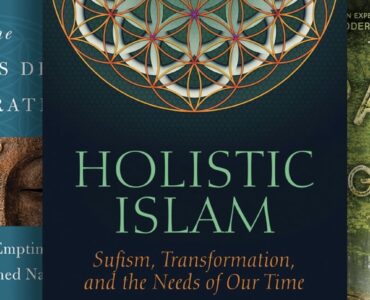
Islamic Education
The highest priority for most Muslim parents in the West is providing Islamic instruction for their children. Where that was not available, some of the early immigrants in the United States, eager that their children acquire religious values, sent them to Christian Sunday schools. Those Muslim parents who were concerned about the values that were thought to be propagated in public schools sent their children to Catholic or Baptist schools. What parents often object to is the intrusion of school officials into what they perceive to be parental prerogatives. They are concerned about the school’s inculcation of cultural patterns that are antithetical to the parents’ traditions and the Islamic faith. Many object to mixing of boys and girls in class, coed gym and swimming classes, sex education, and counseling by school officials that promotes rebellion against the parents’ values.
Education is an important way to create and reinforce feelings of solidarity in the Muslim community. Although the central place of Islamic education in America is still the home, many children attend primary schools run by mosques or Islamic centers. More than one hundred such primary schools are licensed in various states.
The central place for Islamic education continues to be the home, although in the United States and Canada religious instruction is increasingly being carried out in more than fifteen hundred Sunday schools, youth groups, and retreats run by the various mosques and Islamic centers. More than one hundred Islamic religious day schools have been licensed by various states. The majority provide primary education. The most famous high school is the Saudi Academy in northern Virginia; 95 percent of its graduating class goes to college. Religious schools follow the required local curriculum and supplement it with Islamic studies and Arabic language classes. Among the converts in the African American community, Islamic education is considered crucial for the proper instruction of children. The Nation of Islam under the leadership of Elijah Muhammad established about one hundred schools that he named Universities of Islam. These were closed in 1976 by Warith Deen Muhammad, Elijah’s son and successor. It was after a protracted process of re-educating the membership in the Sunni faith and retraining the imams and teachers that Warith Deen reconstituted some of the schools as Sister Clara Muhammad Schools.
In Britain the Queen is officially the head of the church, and there is no pretense of separation of church and state. The 1944 Education Act required that the school day should begin with a Christian-inspired assembly or collective prayer, while allowing parents with alternative religious beliefs to withdraw their children from participating in Christian activities. A 1988 law made religious instruction obligatory. Muslim requests for parity with other religious groups in Britain, such as Jews and Catholics, who receive state funding to support the operation of their religious schools, have been denied. Instead they have been offered a compromise that allows Muslim students to go to single-sex schools. In several inner-city schools in Britain 80 to 90 percent of the student body is Muslim. Several confrontations occurred in the 1970s over school uniforms that required girls to wear short skirts. Girls who did not comply with the regulations were expelled from school, and in some cases parents took their daughters out of school over the issue. A Muslim liaison committee was formed in Bradford to negotiate with the educational authorities about issues important to Muslims. Compromises were eventually worked out, allowing Muslim girls to wear trousers as long as the trousers match the colors of the school uniform. Girls are generally allowed to put on headscarves and they can wear tracksuits for physical education classes. Several schools have tried to organize separate swimming classes for boys and girls and allow Muslim students to wear swimming suits in the shower. The first state Muslim school in Britain opened in early 1998 in London. A second state Muslim school was scheduled to open in Birmingham in September 1998.
In the Netherlands about 60 percent of Moroccan and Turkish students who attend either parochial or public school receive religious education that is subsidized by the government. Because Christianity is taught in confessional schools, and rabbis and ministers teach religion in state schools, Muslims sought to have imams hired as instructors of Islamic education. Although instruction in Islamic tenets was legally guaranteed in the state schools, the law required that it must be taught in Dutch, which few of the imams mastered. In 1986 the Diocesan Catholic school board in Breda denied requests from a few Catholic schools to be allowed to give Islamic instruction. In 1988 the Council of Churches in the Netherlands wrote a letter to the Association of Dutch municipalities concerning this issue. Although Muslims were appreciative that their children, when attending Christian schools, were being educated in an atmosphere in which God is revered, they were apprehensive about efforts at conversion. In 1988 two Islamic schools were opened in Rotterdam and Eindhoven; the latter was associated with a Protestant school, and the one in Rotterdam was connected to a public school. For different reasons both Muslims and non-Muslims had reservations about the venture. Questions were raised about whether there were enough students to justify the dedication of an entire school to one group. Fear was expressed that such a school would impede integration, and serious questions were raised about the lack of qualified Muslim teachers. By 1992 there were more than twenty Islamic schools in the Netherlands, however. Efforts to make room for Islamic instruction in Christian schools appear to have foundered, as Christians began to question whether that was their responsibility. The only exception was the Juliana van Stolbergschool, where initial experiments allowing the imam to provide instruction in Dutch eventually led to the school’s becoming an inter-religious primary school with its own board composed of both Christians and Muslims.
The question of who decides the content of Islamic education exists in all Western nations. In Germany, for example, the government agreed that the Turkish consulate would provide religious instruction in Turkish. The curriculum, published in Turkey, strives to foster devotion to Turkey and Kemalism as well as nationalistic sentiments to a foreign nation. The curriculum continues to be structured as imported Islam taught by imported teachers who do not understand the German community and the daily issues of life that the children face. Questions are raised about whether this kind of instruction will impede the integration of the Turkish community into the German body politic that calls for tolerance and integration of all groups. Several European countries, including Belgium, Sweden, Germany, and the Netherlands, are now supporting imams imported from Turkey, Morocco, and elsewhere to provide instruction in Islam to the Muslim student population. In the Netherlands imams were recruited to serve the immigrants in their own language and inculcate them in their particular culture. By the middle of the 1980s there were an estimated 120 foreign imams (seventy Turkish, forty Moroccan, and ten Surinamese, including the Ahmadiyya).
In the United States, which constantly reaffirms the separation of religion and state, various state and federal officials have hired and credentialed imams for service as chaplains in the prison system. The chaplaincy office of the U.S. armed services has also commissioned four imams as chaplains and are introducing a novel idea in training a woman to be an assistant chaplain. In the Western context the imam’s leadership, social role, and function have been enhanced and transformed to parallel that of the priest or the rabbi. He is not merely the leader of prayer as overseas; rather, he has increasingly become expected to function as a spiritual leader in a non-Muslim environment, an educator and teacher providing information on how to live an Islamic life. He presides over weddings and funerals, serves as a chaplain in hospitals, jails, and the military. He provides counseling for youth and the troubled in his congregation and has become the representative of the Muslims as well as their spokesman to the larger community, a propagator of the faith in dialogue with non-Muslims, and the ambassador to the host culture, attempting to build bridges to other faith communities.
The Muslims are hard pressed to find imams adequately equipped for such a role. Foreign-born and -trained imams have often failed to provide the community with the kind of leadership that makes Muslims comfortable in their new homes in the West. They have generally insisted on replicating foreign cultural standards and constraints as normative for all times and places. They have displayed little understanding of the pressures young people face in the Western environment and have little sympathy with those who advocate that religion should pertain only to the area of belief and not to culture. A few Muslim leaders have raised the issue of whether it is time to start training imams from among the immigrants and their children. The question is where the new breed of imams would get their education. Efforts to open schools for the training of imams in the United States and Britain have been met with skepticism from those who suspect particular theological advocacy on the part of the leadership. They also have been condemned by those who believe that any compromise or adjustment to the Western environment is tantamount to rejection of the faith.
Islamic Education
803 – 041
http://discerningislam.com
Last Updated: 04/2022
See COPYRIGHT information below.



